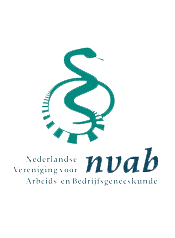A Dutch construction company with 150 workers was faced with one fatal and five non-fatal occupational injuries last year. Three workers' injuries were due to falls from height when working on scaffoldings and two injuries were caused by bricks falling off the scaffoldings. Total sick leave period for the five non-fatal injuries was 1600 working hours related to a financial loss of € 95.000.

The company received an official warning from the labour inspectorate and an assignment to adapt the risk inventory and evaluation, and the corresponding action plan. The company asked the occupational health service (OHS) for help drafting an action plan, although it believed the only solution to reduce occupational injuries at work sites would be governmental regulations.
A multi-disciplinary team of an occupational physician, a safety consultant and an organizational psychologist within the OHS was appointed to help with the company’s action plan. As part of an evidence based approach the team retrieved a Cochrane review summarizing the evidence of interventions aimed to reduce occupational injuries in construction work. Below is a short summary of this review including a general background of the way various interventions could work to reduce occupational injuries, the search methods and main results.
Background
Construction workers are frequently exposed to various types of injury-inducing hazards. There are a number of injury prevention interventions, yet their effectiveness is uncertain. To reduce workers’ injuries, different stakeholders in the construction industry (employers, workers, regulatory authorities, suppliers, manufacturers, owners) should implement and adopt safe working methods, workplaces, materials and equipment. Eventually, construction workers and their management should understand safety risks and measures, be motivated to reduce the safety risks, have the skills to adopt safe working methods, and actually adopt safe working methods and conditions. Informational and educational interventions might reduce injuries by fostering new knowledge and skills about safer working methods. Compulsory and persuasive interventions might reduce injuries by changing attitudes of workers and management to use safer working methods and implement safe working circumstances. Facilitative interventions might reduce injuries by supportive activities to implement safe materials, equipment and construction design. Multifaceted interventions might reduce injuries by combining some or all of the abovementioned interventions.
Summary of methods and main results
The effects of interventions for preventing injuries in construction workers were assessed by searching the Cochrane Injuries Group’s specialized register, CENTRAL, MEDLINE, Embase and PsycINFO up to April 2017. The searches were not restricted by language or publication status. Randomized controlled trials, controlled before-after (CBA) studies and interrupted time-series (ITS) of all types of interventions for preventing fatal and non-fatal injuries among workers at construction sites were included.
In total 17 studies met the inclusion criteria. Interrupted time-series studies evaluated the effects of the introduction or change of regulations which laid down safety and health requirements for construction sites (N=9), a safety campaign (N=2), a drug-free workplace programme (N=1), a training programme (N=1), and safety inspections (N=1) on fatal and non-fatal occupational injuries. One study evaluated the introduction of occupational health services such as risk assessment and health surveillance, one evaluated a training programme and one evaluated a subsidy for the replacement of scaffoldings.
In companies that received multifaceted interventions non-fatal injuries were reduced. The regulatory interventions at national or branch level did not show any initial or sustained effect on fatal and nonfatal injuries. Inspections, introduction of occupational health services, and safety training showed no effects on occupational injuries.
Implications for practice
Introducing regulations alone and regionally oriented interventions may not be effective for preventing occupational injuries in construction workers. However, this might be due to the lack of controlled interrupted time-series design of the studies. Improvements might already occur before the legislation has formally been adopted and thus go unnoticed by this research design. On the other hand, multifaceted and continuing interventions such as a targeted safety campaigns and investment in safer equipment may be effective for reducing injuries. Trying to influence the safety culture and the enforcement of the implementation of safety measures at worksites among management and construction workers remains important, but has not been evaluated in studies.
The evidence informed advice for the company included an action plan that was based on the risk factors of falling from heights and being hit by fallen objects, both related to scaffoldings, and contained: i) a certification process of safe construction and use of scaffoldings, ii) daily work site assessment of the scaffoldings with feedback on shortcomings and iii) regularly updated information and education related to safe working procedures among workers including also all (sub)contractors during monthly toolbox meetings.
Reference
Molen HF van der, Basnet P, Hoonakker PLT, Lehtola MM, Lappalainen J, Frings-Dresen MHW, Haslam R, Verbeek JH. Interventions to prevent injuries in construction workers. Cochrane Database of Systematic Reviews 2018, Issue 2. Art. No.: CD006251. DOI: 10.1002/14651858.CD006251.pub4.
1.
Dit artikel verschijnt in het Engels, omdat de Nederlandse leden van Cochrane Insurance Medicine hun artikelen ook onder de buitenlandse leden willen verspreiden.
Cochrane Insurance Medicine and Cochrane Work
Cochrane Insurance Medicine (CIM) and Cochrane Work would like to keep you up to date with developments within Cochrane and evidence-based medicine in the field of Insurance Medicine and Occupational Health. CIM and Work have been supporting each other for almost three years and conducted various collaborative projects, such as joint workshops at the last two Cochrane Colloquiums.
We recognise that even though you may have seen a Cochrane Review before, you may not know exactly what Cochrane is. Cochrane is an independent international not-for-profit organisation, dedicated to make up-to-date, accurate information about the effects of healthcare readily available worldwide. It produces and disseminates systematic reviews of healthcare interventions and promotes the search for evidence in the form of clinical trials and other studies of interventions.
Within the Cochrane Library you can search for systematic reviews and randomised controlled trials of intervention studies, and to a lesser degree also diagnostic studies. (http://www.cochranelibrary.com).
Within Cochrane Insurance Medicine and Cochrane Work we aim to promote evidence-based best practices in Insurance Medicine and Occupational Health and to facilitate the production and dissemination of systematic reviews that support health and social care decisions on sick leave certification, disability evaluation, and return to work interventions.
Cochrane Insurance Medicine: http://insuremed.cochrane.org/
Cochrane Work: http://work.cochrane.org/
Cochrane news
Amsterdam Satellite of Cochrane Work
In May 2019 we officially registered an Amsterdam Satellite of Cochrane Work at the Coronel Institute with Jan Hoving as its director and as the group’s Deputy Coordinating Editor. The group’s editorial base continues to operate in Finland. The Amsterdam Satellite of Cochrane Work will focus on work participation outcomes and interventions and will work in close collaboration with Cochrane Insurance Medicine.
Save the date: EUMASS Congress 2020 (17-19 Sept) and Cochrane Insurance Medicine pre-congress symposium (16 Sept), Basel Switzerland, 2020
Swiss Insurance Medicine (SIM) and Cochrane Insurance Medicine (CIM) will be co-organizers of the EUMASS Congress 2020 in Basel on the 17th-19th of September. Additionally, CIM will be celebrating on the 16th of September the five years of its creation with an international pre-congress symposium. Save the date and do not miss these great events. We are looking forward to welcome you all in Basel.



